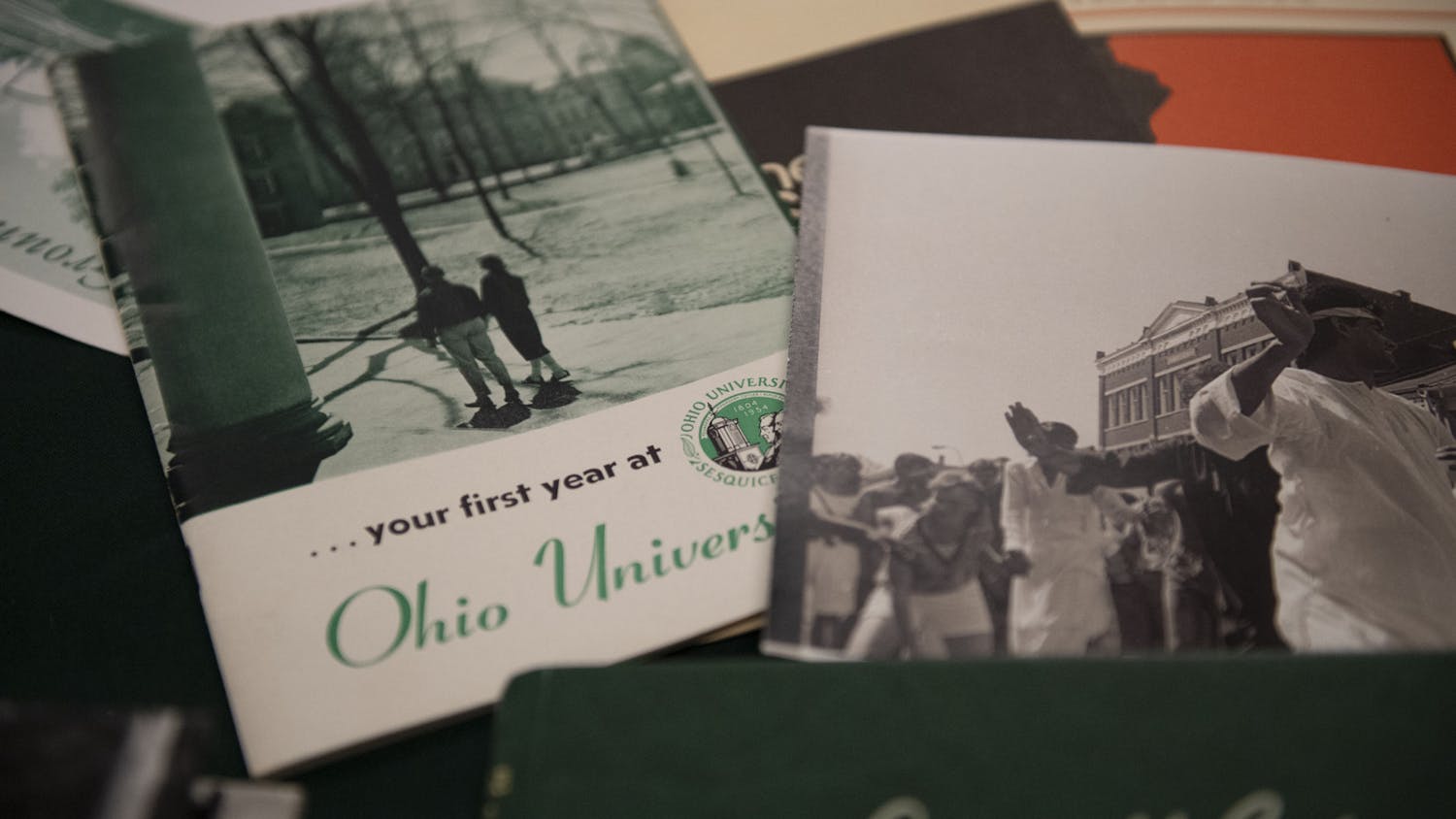College sports have been a part of American culture for more than 100 years. From the first college football game played between Rutgers and Princeton in 1869, fans have flocked to stadiums and arenas to watch student-athletes play games.
But those few hours playing a game have evolved into a 24-hour business model that generates critical revenue for media companies in the United States. As the National Collegiate Athletic Association continues to stress the importance of the amateur status of student-athletes at its member institutions, dozens of companies are making huge profits from college sports.
“It is so stunning to me that there’s just so much money involved with the major college teams,” said Marc Rosenweig, an Ohio University graduate who helped launch the YES Network, which covers professional sports in New York. “It’s almost criminal. It flies in the face of what I think a university is supposed to be about.”
Schools such as the University of Texas and Ohio State University generate more than enough revenue to pay all athletics-related bills, but many athletics departments do not. Of the 120 schools that belong to the Football Bowl Subdivision, only 14 athletics programs broke even in 2009.
That leads athletics directors to seek outside funding. Sometimes those funds come from student fees allocated by university administrators. At Ohio University, Intercollegiate Athletics takes a larger chunk of the students’ General Fee than any other department within the institution, receiving 48.66 percent in the 2010-11 school year.
But that money is not enough to run an athletic department that aims to have its teams compete both regionally and on the national stage. Advertising revenue plays a critical role in an era where television visibility and product placement are king.
Each school has to secure enough advertisers, sponsors and merchandise producers to generate a name for itself. Add to that the physical production of game programs, radio shows and top-snotch advertising signs, and suddenly the marketing challenge is too daunting for mid-major programs such as Ohio University, which can’t afford to pay a large staff to attempt to attract national advertisers to Athens.
That’s where IMG College comes in. IMG College contracts media and marketing rights from universities and streamlines the process by securing advertisers and game-day productions through its Winston-Salem, N.C., headquarters. The company enables mid-major programs to compete at a national level — for a price.
The company offers each school a “minimum financial guarantee” for each year of the contract regardless of how much revenue the athletics department generates through advertising and other marketing.
If the school brings in substantially more revenue, it can get 50 percent of the earnings back, but IMG takes the most direct cut of the money.
“Clearly today there’s increasing pressure on universities from a financial standpoint, particularly public universities with programs being cut and dollars being harder to come by,” said Andrew Giangola, vice president of Strategic Communications for IMG College. “By doing all of that, we help drive revenue to the universities.”
For Ohio, that bottom line guaranteed $395,000 for the 2010-2011 school year, according to records obtained by The Post. Ohio senior associate athletic director Dan Hauser said even with Ohio’s recent football and men’s basketball success, the benefits outweigh any potential costs.
“I don’t believe we would benefit greater by being out on our own,” Hauser said. “We would not be at the table or even get past the gatekeeper to speak about sponsorship at Ohio.”
Through the agreement, IMG College gets advertising rights for everything from the backside of game tickets to logos on playing surfaces. The company also controls advertising on all scoreboards and the design of the athletics department’s website.
Ohio State University, which has a solvent athletics budget and draws hundreds of thousands of fans each football season, signed a 10-year, $110 million rights deal with IMG in 2009. In return, IMG College now owns the rights to Ohio State’s television and radio packages, meaning the company can take a direct cut from the Big Ten’s revenue deal with ESPN.
According to its contract with Ohio State, IMG has paid the university at least $1.6 million every three months since July 2009. The next payment, scheduled for Aug. 1, is $2,448,195. That’s more than Ohio University has received from IMG during the last five years.
IMG is a privately owned company, so its net value is not readily available.
Rosenweig compared IMG College’s role in college sports marketing to ESPN’s dominance of the college media landscape.
“I think just as ESPN has a death grip on television when it comes to college sports, IMG College is trying to do the same on the marketing and sales side,” he said. “I don’t think it’s a good thing. This has become a huge business.”
ESPN’s success showed conferences and teams that the broadcast industry was a viable way to increase revenue from college athletics. In the mid-2000s, the Mountain West Sports Network and Big Ten Network were created by the conferences to take a more direct slice of the revenue pie.
But creating a new network from the ground up required too much capital investment, so the leagues used financial backing from sports media giants to launch the stations, and those media moguls own a majority share of the networks — and their profits . Fox owns 51 percent of the Big Ten Network, and NBC Universal and CBS hold a combined 70 percent ownership of Mountain West Sports Network.
The Mountain West Sports Network, though, officially folded at midnight Friday amid uncertainty about potential conference realignments and increasing difficulties securing advertisers willing to market their brand in smaller media markets.
“My guess is the universities would like to make some money but don’t have the money to put (a network) together and sell it,” said Tom Edwards, who helped launch the Mountain West Sports Network.
Giangola said schools such as Ohio University count on football program visibility to attract top recruits and more students to the university. More students create more General Fee money, and top recruits continue winning traditions.
“We believe that it’s only going to increase in scope. The areas where we serve schools are only going to grow,” Giangola said. “We do see somewhat of a trend to outsource the business functions of athletics to those who have those best practices and can help out.”
ms229908@ohiou.edu





